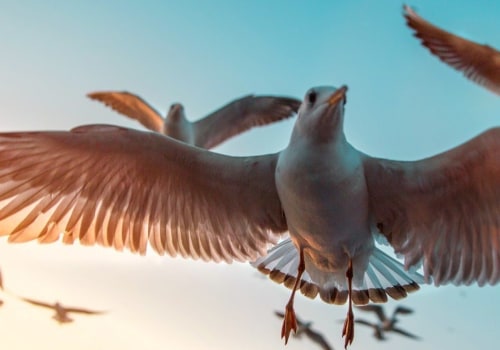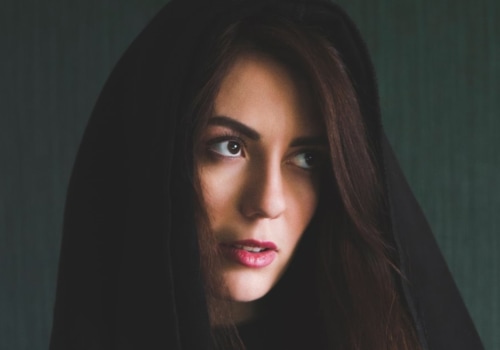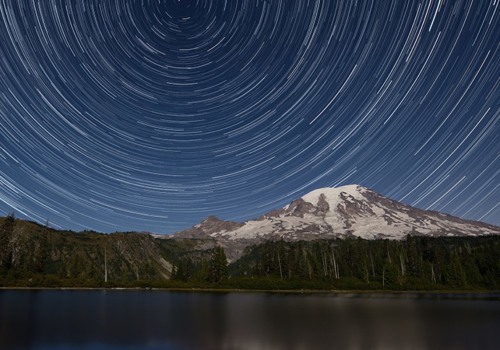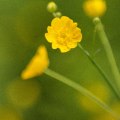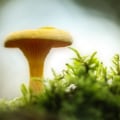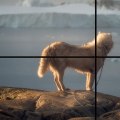Insect macro photography is an incredibly rewarding way to capture the beauty of nature, from the tiniest of creatures to the most intricate of details. With the right equipment, insect macro photography can offer a unique perspective on the world, allowing you to explore and appreciate the smallest wonders of the natural world. From delicate butterflies to busy bees, from colorful dragonflies to tiny spiders, macro photography can help you bring these creatures to life and show them in all their glory. Macro photography is an art form that requires patience, practice and a good eye. You must be able to capture the perfect moment in time – when the insect is in just the right position and with just the right lighting.
It also helps to have a good understanding of composition and framing to help you create beautiful photographs that capture the essence of your subject. By taking up insect macro photography, you can be sure to get up close and personal with the amazing wildlife that exists all around us. Through this art form, you will be able to explore and appreciate the beauty and complexity of nature – from its smallest creatures to its most intricate details.
Patience Is Key in Insect Macro Photography
The key to capturing beautiful insect macro photography is patience. It can be difficult to get the perfect shot of a bug that is constantly moving, and you need to be prepared to wait for the right moment. To increase your chances of success, make sure you have the right equipment and techniques ready beforehand.When photographing insects, it's important to use a tripod and an adjustable macro lens to ensure a steady shot. This will also allow you to take advantage of natural light, which is often the best option for macro photography. You'll also need a flash if you're trying to take pictures in dark or overcast conditions. To capture the perfect shot, make sure you have a good understanding of the insect's behaviour. By observing the subject, you'll be better prepared to anticipate its movements and be ready when it comes into the perfect position for your photograph.
Insects can be skittish and easily startled, so it's important to approach them slowly and calmly. Be patient and take your time; if the insect starts to move away, wait for it to settle again before continuing. Finally, remember that taking a great photograph isn't just about having the right equipment or technique; it's also about creativity. Think outside the box and experiment with angles and framing to create unique and interesting shots.
Lighting for Insect Macro Photography
Lighting for Insect Macro PhotographyLighting is an essential element in macro photography, especially when shooting insects. The right lighting can bring out the intricate details and vibrant colors of your subject, and help to create stunning images. In this section, we'll discuss the importance of lighting in insect macro photography, as well as the different types of light available. Using natural light is one of the most common ways to light insects for macro photography. Natural light is often the most flattering and you don't need any extra equipment, just the sun and a few clouds.However, the intensity and direction of the light can vary depending on the time of day, so you may need to experiment to find the best lighting for your subject. Artificial light is another option if you want more control over your lighting. You can purchase lights specifically designed for macro photography, or use studio lights or a ring light. Using artificial light can make it easier to capture details and produce attractive lighting effects.
Flash is also an option for insect macro photography, but it should be used with caution. Flash can be harsh and can cause your subject to appear washed out. If you do use flash, try diffusing it with a softbox or other diffuser to minimize harsh shadows and glare. Insect macro photography requires careful consideration of the type of light you use and how it will affect your images. Natural light can be flattering and easy to use, while artificial light gives you greater control over the intensity and direction of the light.
Flash should be used with caution as it can produce harsh shadows and glare. Experiment with different types of light to find what works best for your subject.
Equipment Needed for Insect Macro Photography
Insect macro photography requires special equipment to capture the finest details of these tiny creatures. The basics include a camera, a macro lens, lighting, and a tripod.Cameras:
For insect macro photography, you need a camera with manual controls, such as the Sony Alpha A7 III.This will allow you to adjust settings like aperture, shutter speed, and ISO to get the best shots. If you don’t have a camera with manual controls, you can use a point-and-shoot camera or even your phone camera.
Lenses:
The most important piece of equipment for insect macro photography is a macro lens. These lenses have a minimum focusing distance of less than one foot, allowing you to get close enough to capture the intricate details of insects. Popular models include the Canon EF 100mm f/2.8L Macro IS USM lens and the Nikon AF-S VR Micro-Nikkor 105mm f/2.8G IF-ED lens.Lighting:
Lighting is key to capturing great insect macro shots.You can use natural light or artificial light, such as a ring light or flash. If you’re using natural light, try to shoot in the early morning or late afternoon when the light is softer and more diffuse. If you’re using artificial light, make sure it’s not too harsh or too bright so that it doesn’t wash out your subjects.
Tripods:
A tripod is essential for capturing sharp images at high magnifications. Make sure to use a tripod that is sturdy and has adjustable legs so that you can get the exact angle you want.Also, consider using a remote shutter release so that you don’t have to touch the camera and risk shaking it.
Techniques Used in Insect Macro Photography
Insect macro photography requires a unique set of techniques to capture the details of these tiny creatures. Some of the most common techniques used in insect macro photography are focus stacking, depth of field, and shutter speed.Focus Stacking
Focus stacking is a technique that involves taking multiple photos at different focal distances, then combining them into one image. This allows you to capture sharp images of the entire insect, rather than just the parts that are in focus.To do this, you'll need a tripod and a macro lens with manual focusing capabilities.
Depth of Field
Depth of field is the amount of space in front of and behind the subject that is in focus. In insect macro photography, you usually want a shallow depth of field to emphasize the details of the insect and blur out the background. This can be achieved by using a wide aperture setting on your lens.Shutter SpeedShutter speed is another important factor to consider when taking macro photographs of insects. A slower shutter speed will allow more light to enter the camera, which will give you more detail in your shots. However, it can also introduce camera shake if your hand isn't steady enough. A faster shutter speed will freeze any movement, but will require more light or a higher ISO setting.
Tips & Tricks for Insect Macro Photography
When it comes to taking stunning insect macro photos, the key is to practice and experiment with different techniques. Here are a few tips and tricks to help you get the best shots:Lighting: Lighting is an important factor in getting great macro shots. Natural light is best, so try to take your photos outside or near a window during the day. If you’re shooting indoors, use a soft diffuser over a flash or LED light to achieve a softer look.Focus Stacking: Focus stacking is a technique used to get maximum sharpness in your images. This involves taking multiple images at different focus points, and then combining them into one image using editing software. This technique is especially useful for capturing insect macro shots as it allows you to capture the intricate details of the insect.
Tripod:
A tripod can be very helpful for taking macro insect shots as it helps keep the camera steady and stable. This will help eliminate camera shake, which can cause blurry photos.Depth of Field: A shallow depth of field (DOF) is often used in macro photography as it helps separate the subject from the background. This can be achieved by using a wide aperture setting (e.g., f/2.8 or f/4).
Background:
The background can make or break an image, so make sure to choose one that complements your subject. For insect macro shots, try to find a background that is simple and uncluttered, as this will help make your subject stand out.Props: If you want to add extra interest to your insect macro photos, try using props such as leaves or flowers. This can help create an interesting composition and draw attention to the subject.
Composition in Insect Macro Photography
When taking close-up shots of insects, composition is key. It’s important to consider the background, the lighting, the angle and the depth of field when taking your shots.Here are some tips to help you create interesting and dynamic compositions in your insect macro photography.
Background
When framing a shot, it’s important to take into account the background. A busy background can easily detract from your subject and make it difficult to focus on the insect. Try to find a clean, simple background that won’t take away from the insect or overwhelm the image.Lighting
Lighting is also critical when taking insect macro shots. Try to find an angle that will light up the insect’s colors and bring out its details.Side-lighting or back-lighting can often bring out interesting textures and colors in an insect.
Angle
When taking your shot, consider the angle you’re shooting from. For example, shooting from below can add a dramatic effect to the image and make the insect look larger than life. But be careful not to overexpose the shot or create too much distortion.Depth of Field
The depth of field, or “DOF”, is another important consideration when shooting insects. You want to make sure that you have enough DOF so that both the insect and its details are in focus.Try using a larger aperture to increase your DOF and get more of the subject in focus.
Practice
As with all types of photography, practice makes perfect. Take lots of shots and experiment with different angles and lighting setups to find what works best for you. With time and practice, you’ll be able to create stunning close-up images of insects that bring out their intricate details and vibrant colors. Insect macro photography is an exciting and rewarding way to capture the small wonders of nature. With the right equipment, techniques, and lighting, you can create stunning close-up images of insects that emphasize their intricate details and vibrant colors.This article has discussed the necessary equipment, techniques, lighting, composition, and patience needed to capture great insect macro photographs. We have also shared some tips and tricks to help you get the best shots. The key is to practice and experiment with different techniques to find out what works best for you.

